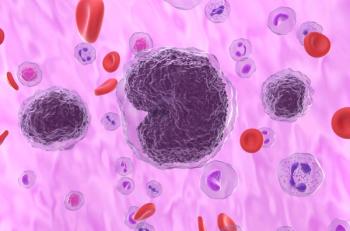
Biomarkers to Distinguish Psoriatic Arthritis Prove Elusive, Study Says
Catching psoriatric arthritis (PsA) early has been a challenge even when the diagnosis is aided by sonography, according to the authors.
Catching PsA early has been a challenge even when the diagnosis is aided by sonography, according to the authors. The difficulty shows up in the literature, such as a
“The under-diagnosis of PSA among persons with psoriasis not only delays treatment but also increases the risk of joint damage,” they wrote. “In one study, the rate of PSA under-diagnosis was estimated to be about 9%. Early diagnosis of PSA could also increase awareness in doctors to treat comorbidities.”
The authors retrospectively analyzed serological markers and comorbidities in 629 psoriatic patients, including 102 with PsA; the others had psoriasis. The serological markers were not useful (P > .05 for all comparisons). Prevalence of PsA among the psoriasis patients was 19.4%.
According to the study, the team found no early warning for PsA after testing for total leukocyte count, platelets, hemoglobin, hematocrit, lipoprotein profile, inflammation markers (C-reactive protein, erythrocyte sediment rate), titers of anti-nuclear antibodies, or rheumatoid factor.
Comorbidities proved more useful. Metabolic syndrome-hyperlipidemia (2.94%) and gout (4.9%) were significantly more prevalent in those with PsA than those with psoriasis (P < .05). The odds ratio (OR) for PsA is 15.94 in patients with hyperlipidemia (95% CI, 1.64-154.80). The OR for PSA is 3.83 in those with gout (95% CI, 1.19-12.31).
Allergic rhinitis was more prevalent (5.88%) in patients with PsA than patients with psoriasis (P < .01); The OR was 8.17 (95% CI, 2.26-29.50). One possible biomarker, plasma hs-miR-210-3p, separates PsA from psoriasis and can be detected even after treatment with anti-tumor necrosis factor-α agents (P < .05).
Reference
Su Y. Early diagnosis of psoriatic arthritis among psoriasis patients: clinical experience sharing. Clin Rheumatol. Published online May 28, 2020. doi:10.1007/s10067-020-05132-1
Newsletter
Stay ahead of policy, cost, and value—subscribe to AJMC for expert insights at the intersection of clinical care and health economics.













































